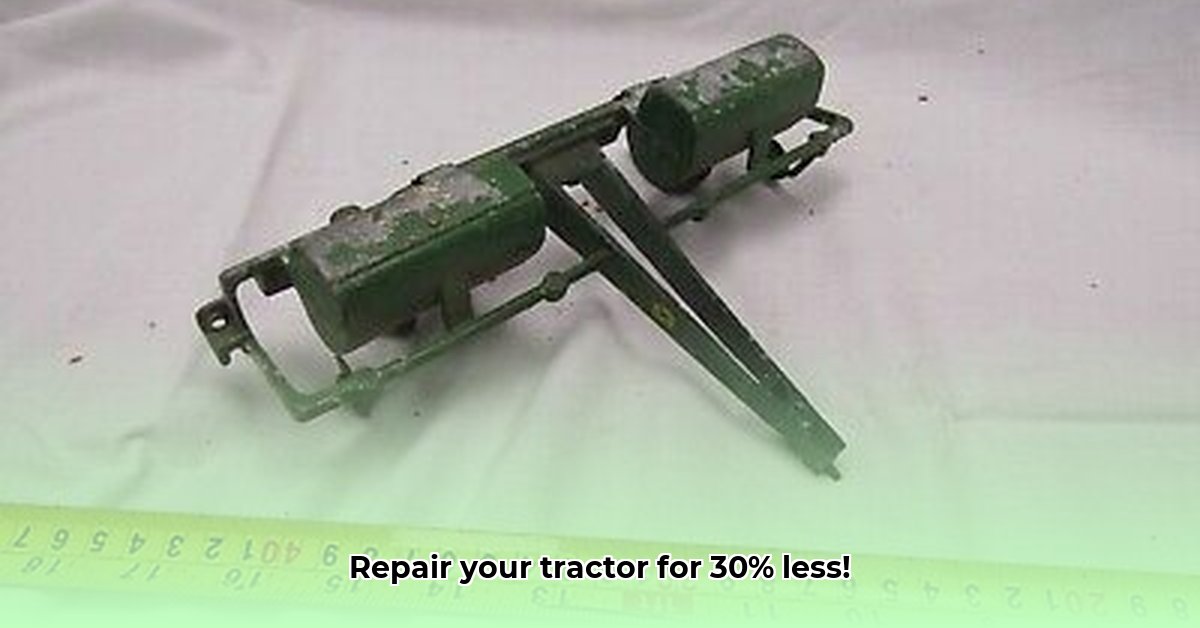
Farm Tractor Repair Parts: Maximizing Your Budget
Maintaining peak operational efficiency on your farm is paramount, but the high cost of Original Equipment Manufacturer (OEM) tractor parts can significantly impact your bottom line. This guide helps you navigate the landscape of affordable, reliable tractor repair parts, enabling significant cost savings without compromising quality or sustainability. We'll compare OEM and aftermarket parts, focusing on cost, durability, and the long-term implications of your purchasing decisions. For more on tractor values, see this helpful resource: Tractor Value Guide.
OEM vs. Aftermarket Parts: A Cost Comparison
Original Equipment Manufacturer (OEM) parts are undeniably expensive. However, online retailers like Complete Tractor and TractorPartsASAP offer significant cost savings, often advertising discounts of up to 30% compared to OEM prices. This potential for substantial savings raises crucial questions about the trade-off between cost and quality. But how do these lower prices impact long-term operational costs?
Quality and Durability: Long-Term Value Assessment
While Complete Tractor claims its parts meet OEM specifications, independent verification of long-term durability remains limited. TractorPartsASAP offers a mix of OEM and aftermarket parts, further complicating direct comparisons. This lack of transparency presents a significant challenge for farmers seeking to balance upfront cost savings with the potential for premature part failure. How can you accurately assess the potential risks associated with non-OEM parts? Independent reviews and detailed product specifications are crucial considerations.
Sustainability: Environmental and Economic Impacts
The initial cost savings from aftermarket parts might seem appealing, but consider the complete lifecycle cost. More frequent replacements due to lower quality parts could negate initial savings. Furthermore, increased production and disposal of parts contribute to environmental concerns. A truly sustainable approach requires consideration of the entire lifecycle, from manufacturing to disposal, not just the initial purchase price. What are the long-term environmental and economic consequences of your part purchasing decisions?
Actionable Guide: Choosing the Right Tractor Parts
This step-by-step approach helps farmers make informed decisions when selecting tractor parts:
Identify Reputable Suppliers: Thoroughly research potential suppliers. Check online reviews, seek recommendations from other farmers, and verify any quality certifications. A strong reputation is crucial for long-term confidence.
Assess Part Quality: Look for detailed specifications and verifiable quality certifications. Don't rely solely on vague descriptions. For critical components, OEM parts may be the most prudent choice, despite the higher upfront cost.
Implement a Preventative Maintenance Plan: A consistent maintenance schedule is vital for extending the lifespan of your tractor and reducing the need for frequent repairs, regardless of the part's origin.
Understand Warranty Information: Carefully review warranty details before purchasing any parts. Understanding the warranty’s terms and conditions can protect your investment should any issues arise.
Recommendations for Suppliers: Enhancing Transparency
To enhance consumer trust and address concerns about transparency, aftermarket parts suppliers should prioritize these improvements:
Independent Testing: Invest in third-party testing to validate the quality and durability claims of your products. This transparency will build greater confidence among farmers.
Clear Warranty Information: Provide comprehensive and easily understandable warranty information, avoiding confusing legal jargon. Clear communication is paramount.
Sustainable Sourcing: Emphasize sustainable sourcing and manufacturing practices to appeal to environmentally conscious farmers. Highlighting your commitment to sustainability can differentiate your brand.
Future Implications: Industry Standards and Regulation
The current lack of standardized quality control in the aftermarket parts industry creates uncertainty and risk for farmers. Future regulatory changes could mandate clearer labeling, enhanced quality assurance protocols, and more sustainable manufacturing practices. A move towards more stringent industry standards is likely, aiming to protect farmers and enhance transparency.
Conclusion: Informed Decision-Making for Sustainable Farming
Selecting the right tractor parts requires a careful balancing act between cost savings and long-term reliability. By following the guidance provided in this guide, farmers can make informed decisions that support both their financial well-being and the environmental sustainability of their operations. The information presented here helps you navigate the complexities of tractor part selection, enabling you to make choices that preserve your farm’s long-term viability.
Risk Assessment Matrix: OEM vs. Aftermarket Parts
| Part Source | Potential for Early Failure | Severity of Failure | Overall Risk Level |
|---|---|---|---|
| OEM Parts | Low | Low | Low |
| Complete Tractor Parts | Moderate | Moderate | Moderate |
| TractorPartsASAP Parts | Potentially High | Moderate to High | High |
Note: This risk assessment is based on currently available information and may vary based on specific part types and individual supplier performance. Always conduct thorough research and seek independent reviews before making purchase decisions.